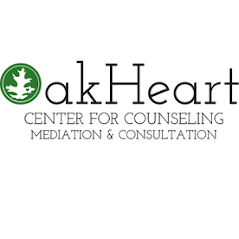HypervigilanceWritten by Christina Bieche, MSEd, LCPC, NCCA very common and natural response following any significant traumatic event and is one of the primary diagnostic criteria for posttraumatic stress disorder (PTSD) is hyperarousal, also known as hypervigilance. Biological changes in your mind and body which are initiated by a traumatic event instinctively remain alert to any additional potential threats to your wellbeing…both real or imagined. This is known as hypervigilance and can be an outcome of the anxiety experienced as part of Acute Stress Disorder or Posttraumatic Stress Disorder. The feelings of hypervigilance fluctuate and are often triggered by certain people or specific situations. Being in this constant state of heightened alert, tension, and “on guard” feeling for any hidden dangers is both stressful and exhausting to maintain over a prolonged period of time. During a time of heightened hypervigilance or when triggered, many trauma survivors experience intense bursts of energy or a drive to keep "doing something". It is not uncommon to discover that this energy is subconsciously aimed at managing the distress, anger, and pain resulting from a traumatic experience.
A few recurrent symptoms of hypervigilance may include sleeplessness, anxiety, panic attacks, and obsessive or obsessive-compulsive thoughts as well as behaviors. It is important to learn how to recognize hypervigilance, to channel that energy into constructive activities, and ultimately to find a way to peacefully rest and relax. Understanding Hypervigilance As mentioned earlier, hypervigilance is one of the diagnostic criteria for PTSD. Hypervigilance is watchfulness or checking one's surroundings that is over and above what is normal or reasonable. Hypervigilance takes many forms. It is what makes some of us always choose an aisle seat or one where our back is to a wall. It's what makes some of us carry defensive weapons such as guns, knives, mace or pepper spray, a police whistle or a cell phone set to 911. It makes some of us cross the street to avoid suspicious people. Some of us have alarm systems, multiple locks, window locks, high fences, guard dogs, etc. Another form of hypervigilance is studying people very carefully in an attempt to look deeply into their soul to determine exactly what they are made of. Hypervigilance is included in the cluster of symptoms referred to as "increased arousal". This cluster also includes difficulty sleeping, irritability or outbursts of anger, difficulty concentrating, and exaggerated startle response. This increased arousal stems directly from trauma and the form it takes is shaped directly by the nature of the trauma. If one has difficulty sleeping, it may be because they are afraid to go to sleep or stay asleep for fear of an attack of some sort while unable to fight or avoid it. If irritable, it may be to warn people to keep their distance or to not behave in ways that might trigger the trauma survivor. If one finds it challenging to concentrate, it may be because they are too busy trying to monitor all inputs from possible dangers. If one startles easily, it may be because they learned to jump quickly to get out of harm's way. And if one is hypervigilant, it is probably because they saw their environment as having multiple and unpredictable dangers that warrant a state of constant alert. In fact, much of the time, our hypervigilance helps to keep us safe. However, the "hyper" in hypervigilance suggests that one does more than is normal or reasonable. It is too much because it is an inconvenience or an encumbrance. While it is probably true that those diagnosed with PTSD are indeed safer because of all the precautions constantly taken, it is probably also true that hypervigilance gets in the way and can be an annoyance. It may be that one deprives themselves of going certain places and participating in certain events. For example, a person won't go to an event because they cannot get an aisle seat, or because they don't know what kind of people are going to be there. Sometimes, just seeing other people looking at you will automatically create thoughts of they are judging me or have the potential to be hostile toward me. Sometimes, a person will avoid eating certain foods due to a fear of being poisoned or made ill. These are just a few examples but there are actually a number of other ways in which hypervigilance can become an inconvenience. Desired Outcome In order to regain control following a traumatic event and decrease the intensity of hyperarousal, one will need to gain an increased understanding of the sources of their hypervigilance, acknowledge its advantages and disadvantages, accept the presence of hypervigilance in their lives, and increase their ability to manage unwanted thoughts and behaviors that are driven by their hypervigilant state. Questions to Consider
If you are interested in counseling for trauma or PTSD, call OakHeart at 630-570-0050 or 779-201-6440 or email us at [email protected]. We have counselors, psychologists, and social workers available to help you at one of our locations in North Aurora, IL, Sycamore, IL, and/or via Telehealth Online Therapy Services serving Kane County, DeKalb County, Dupage County, and beyond. Comments are closed.
|
OakHeart
|
- Home
- Counseling
-
Specialties
- Depression
- Bipolar Disorder
- Anxiety Disorders >
- Obsessive-Compulsive Disorder (OCD)
- Eating Disorders
- Grief and Bereavement
- ADHD
- Maternal Mental Health
- Infertility, Miscarriage, and Neonatal Loss
- Domestic Violence and Sexual Assault
- Posttraumatic Stress Disorder (PTSD) >
- Trauma
- Non-Suicidal Self-Injury (NSSI)
- Substance Use Disorders (SUD)
- Anger Management
- Insomnia
- Divorce Recovery
- Relationship Concerns and Couples Counseling
- Self-Esteem
- Therapy for Therapists
- LGBTQA+ Support
- Faith-Based Counseling
-
Providers
- Erin Mitchell
- Pamela Heilman
- Katie Sheehan
- Hillary Gorin
- Lee Ann Heathcoat
- Adam Ginsburg
- Megan Noren
- Sarah Williams
- Christina Bieche
- Bridgette Koukos
- Laura Lahay
- Kate Nash
- Anna Perkowski
- Alma Lazaro
- Leah Arthur
- Marissa Vogrin
- Erin Blair
- Amy Jakobsen
- Lizzy Lowe
- Tony Fasano
- Gerry Lawm
- Vanessa Osmer
- Kat Harris
- Locations
- Contact
- Treatments
- Employment
- FAQ and Notices
- OakHeart Blog
- Administrative and Leadership Team
- Mental Health Resources
- Divorce Mediation
- Professional Consultation
|
|




